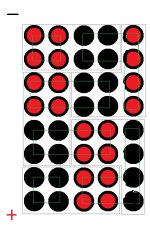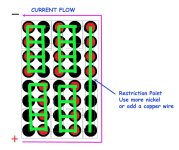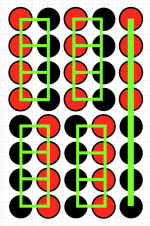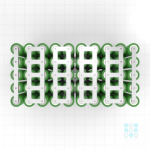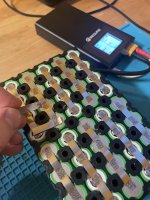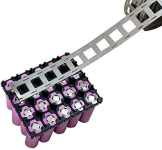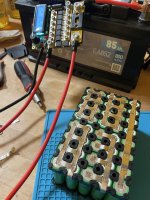madrian
1 mW
- Joined
- Nov 23, 2022
- Messages
- 12
Hi all,
I bought a bike with a Swytch kit, but the battery is completely bad. I tested the capacity, which is only 1.5Ah out of the original 5Ah. I've looked for various solutions, such as some battery packs from Aliexpress, like Aerdu. I've read both good and bad reviews about them, so it's more like a lottery. I believe the best and most reliable solution is to rebuild it myself. I already have a decent spot-welder and some electronics knowledge. In the past, I've repaired some broken connections on ebike cells, replaced BMS, rebalanced cells, but I'm not 100% confident in recelling this whole battery.
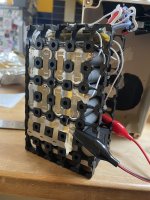
If you look at the image, the original battery uses an 8x5 honeycomb, where only 20 cells (10s2p?!) are used out of the 40. If I'm going to swap, I think it might be worth using all the empty spaces on the holder to maximize the battery's capacity.
I don't know if I can request help like this, but I would like your help with the battery layout and connections. I don't know where to start with the 8x5 design. I've watched and read many videos and articles, even for batteries like my 10s4p, but they were all different (like 4 rows in width). I would be very grateful if someone could sketch a quick drawing for this configuration. With that, I would feel more confident taking on this project.
I bought a bike with a Swytch kit, but the battery is completely bad. I tested the capacity, which is only 1.5Ah out of the original 5Ah. I've looked for various solutions, such as some battery packs from Aliexpress, like Aerdu. I've read both good and bad reviews about them, so it's more like a lottery. I believe the best and most reliable solution is to rebuild it myself. I already have a decent spot-welder and some electronics knowledge. In the past, I've repaired some broken connections on ebike cells, replaced BMS, rebalanced cells, but I'm not 100% confident in recelling this whole battery.

If you look at the image, the original battery uses an 8x5 honeycomb, where only 20 cells (10s2p?!) are used out of the 40. If I'm going to swap, I think it might be worth using all the empty spaces on the holder to maximize the battery's capacity.
I don't know if I can request help like this, but I would like your help with the battery layout and connections. I don't know where to start with the 8x5 design. I've watched and read many videos and articles, even for batteries like my 10s4p, but they were all different (like 4 rows in width). I would be very grateful if someone could sketch a quick drawing for this configuration. With that, I would feel more confident taking on this project.


